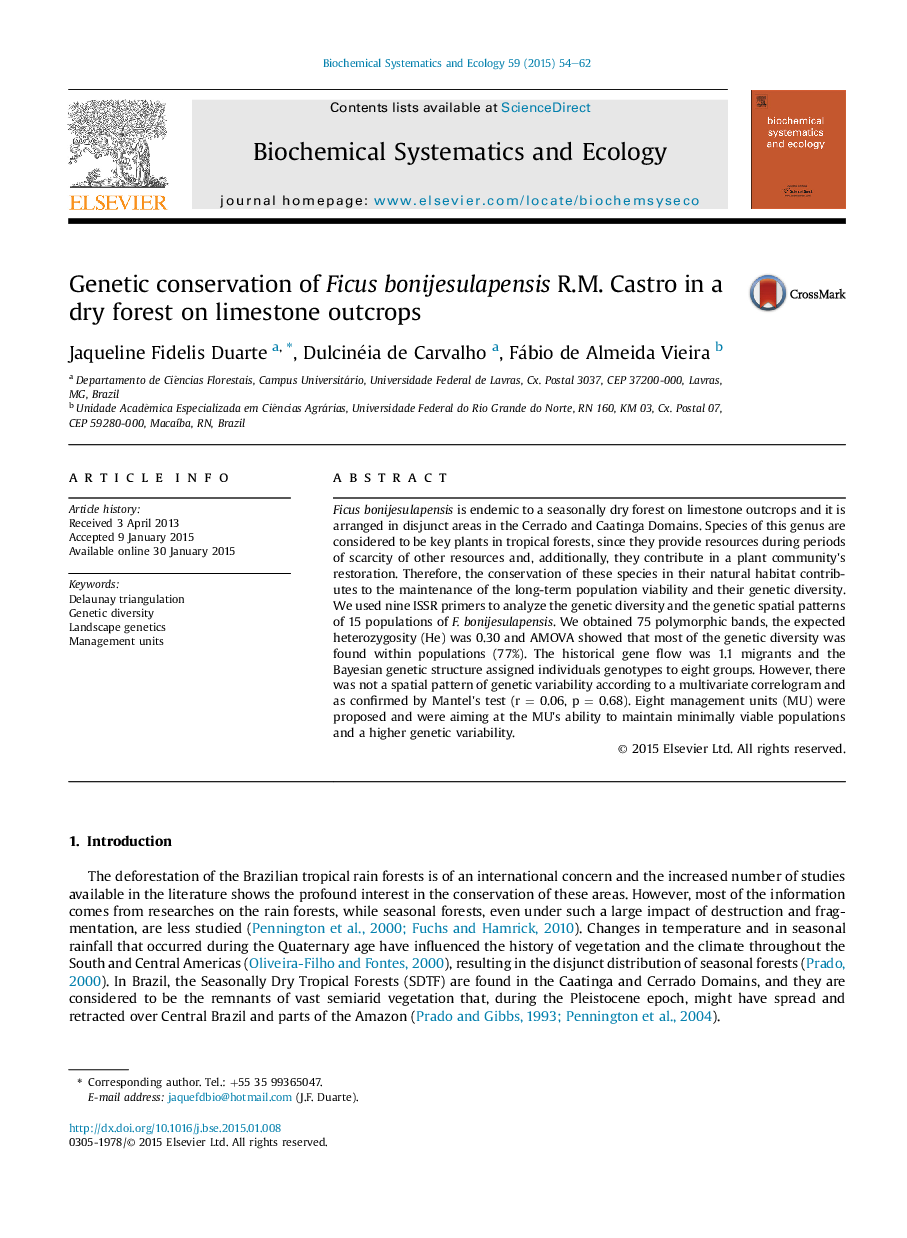| Article ID | Journal | Published Year | Pages | File Type |
|---|---|---|---|---|
| 1351339 | Biochemical Systematics and Ecology | 2015 | 9 Pages |
•Expected heterozygosity of Ficus bonijesulapensis populations was 0.30.•Most genetic variation occurred within populations of F. bonijesulapensis.•No significant correlation between genetic and geographical distance in the populations was found.•All individuals genotypes were grouped in 8 clusters.•Each population can be used as a management unit.
Ficus bonijesulapensis is endemic to a seasonally dry forest on limestone outcrops and it is arranged in disjunct areas in the Cerrado and Caatinga Domains. Species of this genus are considered to be key plants in tropical forests, since they provide resources during periods of scarcity of other resources and, additionally, they contribute in a plant community's restoration. Therefore, the conservation of these species in their natural habitat contributes to the maintenance of the long-term population viability and their genetic diversity. We used nine ISSR primers to analyze the genetic diversity and the genetic spatial patterns of 15 populations of F. bonijesulapensis. We obtained 75 polymorphic bands, the expected heterozygosity (He) was 0.30 and AMOVA showed that most of the genetic diversity was found within populations (77%). The historical gene flow was 1.1 migrants and the Bayesian genetic structure assigned individuals genotypes to eight groups. However, there was not a spatial pattern of genetic variability according to a multivariate correlogram and as confirmed by Mantel's test (r = 0.06, p = 0.68). Eight management units (MU) were proposed and were aiming at the MU's ability to maintain minimally viable populations and a higher genetic variability.
